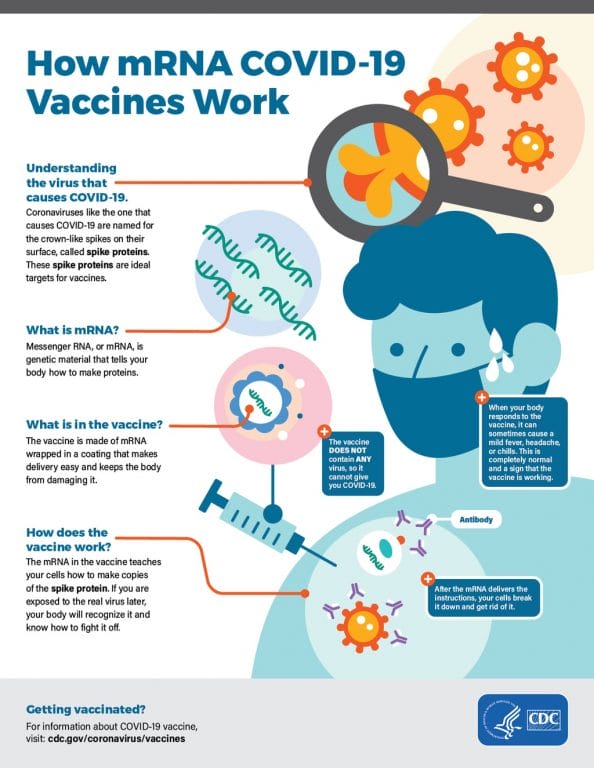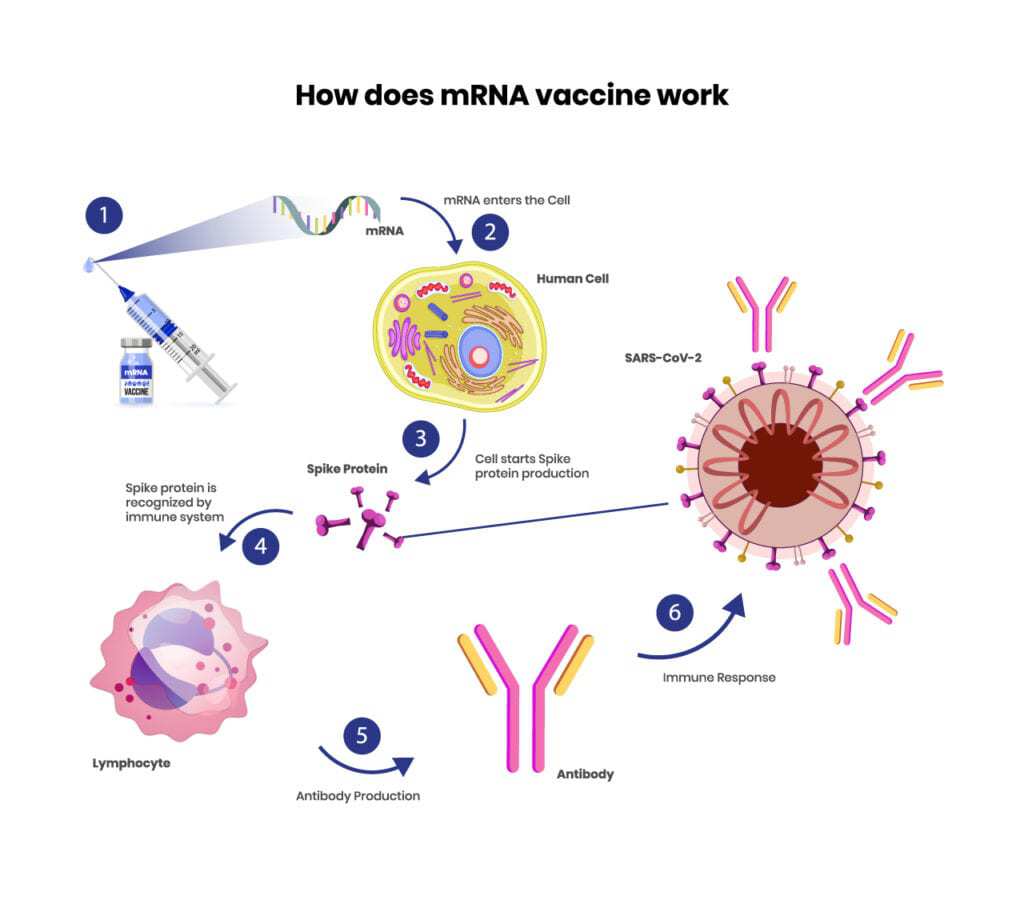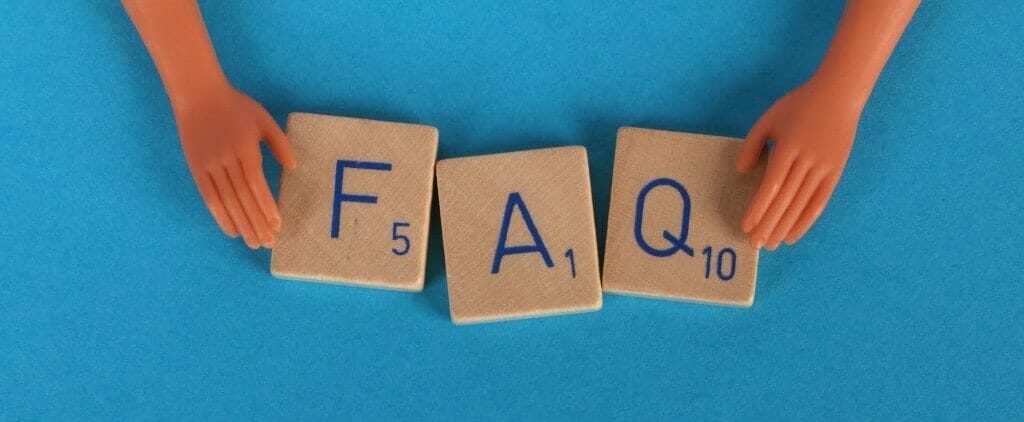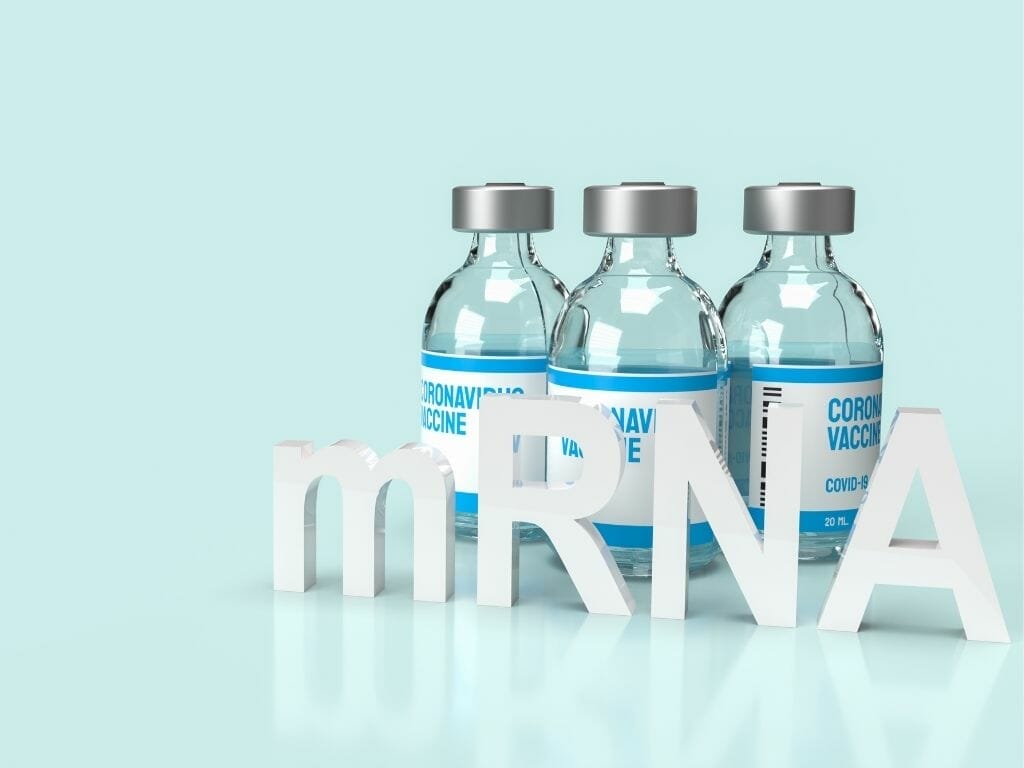What is mRNA? Your Dummy’s Guide to mRNA
One surprising star of the coronavirus pandemic reaction has been the particle called mRNA. It’s the vital active ingredient in the Pfizer and Moderna COVID-19 vaccines. However mRNA itself is not a new innovation from the lab. It progressed billions of years ago and also is naturally found in every cell in your body. Researchers assume RNA came from the earliest life kinds, also before DNA existed. To help you better understand the powers of this intermediary messenger, Tropika Club has created a Dummy’s guide to mRNA.
Table of contents
No Time to Read? Here’s a Snappy Summary of This Article
- mRNA and COVID-19 Vaccines: One surprising star of the coronavirus pandemic reaction has been the particle called mRNA. It’s the vital active ingredient in the Pfizer and Moderna COVID-19 vaccines.
- What is DNA and mRNA?: DNA is the molecule that contains all of your genetics defined in a four-letter code– A, C, G, and T. DNA is found inside the cells of every living thing. It’s protected in a part of the cell called the nucleus. The genes are the information in the DNA blueprint for all the physical characteristics that make you distinctly you. That’s where messenger RNA, or mRNA for short, comes in. Sections of the DNA code are transcribed into shortened messages that are instructions for making proteins. These messages– the mRNA– are carried out to the main part of the cell.
- Differences between DNA and mRNA: The structure of RNA resembles DNA but has some vital differences. RNA is a single strand of code letters (nucleotides), while DNA is double-stranded. The RNA code contains a U instead of a T– uracil instead of thymine. Both RNA and DNA structures have a backbone made of sugar and phosphate molecules, but RNA’s sugar is ribose and DNA’s is deoxyribose.
- mRNA is Configured to Self-destruct: The process that converts DNA to mRNA to protein is the foundation for how the cell functions. As the intermediary messenger, mRNA is an important security device in the cell.
What is DNA and mRNA?
You probably know about DNA. It’s the particle which contains all of your genetics defined in a four-letter code– A, C, G and T. DNA is found inside the cells of every living thing. It’s shielded in a part of the cell called the center. The genes are the details in the DNA blueprint for all the physical qualities that make you distinctly you.
Yet the information from your genes has to receive from the DNA in the nucleus bent on the main part of the cell– the cytoplasm– where proteins are set up. Cells count on healthy proteins to perform the many processes needed for the body to function. That’s where carrier RNA, or mRNA for brief, is available in. Sections of the DNA code are recorded into shortened messages that are guidelines for making healthy proteins. These messages– the mRNA– are carried out to the almost all of the cell. Once the mRNA gets here, the cell can produce particular proteins from these guidelines.

Differences between DNA and mRNA
The framework of RNA resembles DNA yet has some vital distinctions. RNA is a solitary strand of code letters (nucleotides), while DNA is double-stranded. The RNA code contains a U rather than a T– uracil rather than thymine. Both RNA as well as DNA structures have actually a backbone made of sugar and phosphate particles, however RNA’s sugar is ribose and also DNA’s is deoxyribose. DNA’s sugar includes one less oxygen atom and this difference is mirrored in their names: DNA is the label for deoxyribonucleic acid, RNA is ribonucleic acid.
The same duplicates of DNA live in every single cell of a microorganism, from a lung cell to a muscle cell to a nerve cell. RNA is generated as needed in response to the dynamic cellular setting and also the prompt needs of the body. It’s mRNA’s task to aid fire up the cellular equipment to construct the healthy proteins, as inscribed by the DNA, that are appropriate for that time and location.
mRNA is Configured to Self-destruct
The procedure that converts DNA to mRNA to healthy protein is the foundation for just how the cell features. As the intermediary messenger, mRNA is an important security device in the cell. It protects against invaders from hijacking the mobile equipment to produce foreign healthy proteins due to the fact that any kind of RNA beyond the cell is instantly targeted for damage by enzymes called RNases. When these enzymes acknowledge the structure as well as the U in the RNA code, they eliminate the message, shielding the cell from false guidelines.
“The fate of the mRNA molecules we studied resembles a Greek tragedy,” said the study’s senior author, Robert Singer, Ph.D., co-director of the Gruss Lipper Biophotonics Center and professor and co-chair of anatomy and structural biology at Einstein. “Their lifespans are determined at the moment of their birth.” The study was carried out in yeast cells using advanced microscope technology developed previously by Dr. Singer that has allowed scientists, for the first time, to observe single molecules in single cells in real time.
Directions for making proteins are encoded in the DNA sequences of genes, which reside on chromosomes in the nucleus of each cell. But for proteins to be made, a gene’s DNA code must be copied, or transcribed, onto mRNA molecules, which migrate from the nucleus and into the cytoplasm where the cell’s protein-making machinery is located. For as long as it exists, an mRNA molecule can act as a template for making copies of a protein. So scientists have long suspected that cells must have ways for degrading mRNAs when, for example, a protein starts accumulating to harmful levels. “The cell somehow decides to destroy its mRNA on cue, but nobody knew how this happens,” said Dr. Singer.
mRNA has a short half-life
The mRNA also gives the cell a way to control the price of healthy protein manufacturing– transforming the plans “on” or “off” as required. No cell wants to generate every protein explained in your entire genome all at once.
Messenger RNA instructions are timed to self-destruct, like a going away message or snapchat message. Structural attributes of the mRNA– the U in the code, its single-stranded form, ribose sugar and its specific sequence– make certain that the mRNA has a short half-life. These attributes incorporate to enable the message to be “read,” translated right into healthy proteins, and after that rapidly damaged– within minutes for sure healthy proteins that require to be tightly controlled, or approximately a couple of hours for others. Once the instructions vanish, protein production stops until the protein factories receive a new message.
Read Also:
Recognising the Different Skin Cancers and How to Prevent Them
Using mRNA for inoculation
All of mRNA’s attributes made it of terrific passion to vaccination developers. The objective of an injection is to get your body immune system to react to a safe variation or part of a germ so when you run into the genuine thing you prepare to combat it off. Scientists found a way to introduce and shield an mRNA message with the code for a portion of the spike healthy protein on the SARS-CoV-2 infection’s surface area. The injection offers simply sufficient mRNA to make simply enough of the spike healthy protein for a person’s immune system to create antibodies that protect them if they are later subjected to the virus. The mRNA in the vaccination is soon destroyed by the cell– just as any other mRNA would certainly be. The mRNA can not get into the cell core and also it can not influence an individual’s DNA.
Although these are brand-new vaccines, the underlying technology was at first developed many years ago and boosted incrementally gradually. Therefore, the injections have actually been well examined for safety and security. The success of these mRNA vaccines versus COVID-19, in regards to security and also efficiency, anticipates a brilliant future for new vaccination therapies that can be promptly customized to brand-new, emerging hazards. Early-stage professional tests using mRNA vaccines have actually currently been performed for influenza, Zika, rabies, and cytomegalovirus. Definitely, imaginative scientists are currently considering and also establishing therapies for various other conditions or conditions that might benefit from a strategy similar to that made use of for the injections against COVID-19.

Conclusion
mRNA has been a hot topic lately, especially with the development of the Pfizer and Moderna COVID-19 vaccines. But what exactly is mRNA? Well, let us break it down for you.
mRNA stands for messenger RNA. It’s a molecule that carries genetic information from DNA to the ribosomes, where proteins are made. Think of it like a messenger delivering instructions from the boss (DNA) to the workers (ribosomes) on how to build something (proteins).
Now, you might be wondering how mRNA is used in vaccines. Well, instead of using a weakened or inactivated virus like traditional vaccines, mRNA vaccines use a piece of genetic code from the virus. This code instructs our cells to produce a protein that triggers an immune response, which helps protect us from getting infected if we’re exposed to the virus.
One of the cool things about mRNA is that it’s configured to self-destruct. This means that once it delivers its message, it breaks down and is removed from the body. So, there’s no need to worry about any long-term effects from the vaccine.
In conclusion, mRNA is a fascinating molecule that plays a crucial role in how our cells function. Its use in vaccines has opened up new possibilities for preventing and treating diseases. At Tropika Club Magazine, we believe that understanding the science behind these developments can help us make informed decisions about our health. So next time someone asks you what mRNA is, you’ll be able to explain it like a pro! 😊

Frequently Asked Questions (FAQ)
Q: How do mRNA vaccines work?
A: mRNA vaccines work by introducing a piece of mRNA into the body that corresponds to a viral protein, usually a small piece of a protein found on the virus’s outer membrane. This mRNA is taken up by cells, which then produce the viral protein. This stimulates the production of an immune response to the spike protein that protects the vaccinated person because the spike protein is an important part of the virus.
Q: Are mRNA vaccines safe?
A: Yes, mRNA vaccines have been shown to be safe and effective in clinical trials. The Pfizer-BioNTech and Moderna COVID-19 vaccines, which are both mRNA vaccines, have been authorized for emergency use by regulatory agencies around the world, including Singapore’s Health Sciences Authority (HSA).
Q: Are there any side effects of mRNA vaccines?
A: Like all vaccines, mRNA vaccines can cause side effects. The most common side effects are mild and include pain or swelling at the injection site, fever, chills, fatigue, and headache. These side effects usually go away on their own within a few days.
Q: Can mRNA vaccines cause autoimmune diseases?
A: There is no evidence to suggest that mRNA vaccines can cause autoimmune diseases. Autoimmune diseases develop over years and decades due to a combination of genetics, environment, hormones, and health history. An mRNA vaccine does not have that effect on your body.
Q: Are mRNA vaccines effective against new variants of COVID-19?
A: Yes, studies have shown that mRNA vaccines are effective against key variants of concern (VOCs), including the Delta variant. However, vaccine effectiveness may vary depending on the specific variant.
Q: Can I get an mRNA vaccine if I am pregnant or breastfeeding?
A: Yes, you can get an mRNA vaccine if you are pregnant or breastfeeding. The American College of Obstetricians and Gynecologists (ACOG) recommends that pregnant and breastfeeding individuals be vaccinated against COVID-19.

Have an Article to Suggest?
Tropika Club is always looking for new and exciting content to feature in their magazine and they value the input of our readers. If you have any noteworthy content or articles that you believe would be a great addition to Tropika Club’s magazine, we are open to suggestions and encourage you to reach out to us via email at [email protected]. By doing so, Tropika Club values your expertise and knowledge in the matter and appreciates your willingness to help. We will review your recommendations and update our list accordingly
Meanwhile, Check Out Tropika Club’s Ecosystem of Websites

Tropika Club Magazine – Tropika Club Magazine is a Singapore-based publication that features articles on a wide range of topics with a focus on local businesses and content for the region. The magazine emphasizes supporting local businesses through its #SupportLocal initiative, which includes coverage of everything from neighborhood hawker stalls to aesthetic clinics in town. In addition to highlighting local businesses, Tropika Club Magazine also covers a variety of local content, including beauty, lifestyle, places, eats, and what’s on in Singapore and the Asia Pacific region.
Tropika Club Deals – Tropika Club Deals is a leading online deals and voucher shopping site in Singapore, offering amazing discounts on beauty, wellness, and fitness products and services. It’s the perfect platform for customers who want to discover the best deals without having to commit to a specific appointment date and time. These deals are available at major beauty stores, facial salons, hair salons, and other brands in Singapore, with no minimum spend required. Choose from guaranteed discounted deals in the categories of hairstyling, hair removal, facial & aesthetics, body slimming, brows & lashes, nails & makeup, massage & spa or fitness & wellness. Tropika Club Deals is also ideal for customers who want to buy vouchers as gifts or to use for the future. So whether you’re looking to save money on your next haircut or want to treat yourself to a relaxing massage, Tropika Club Deals has got you covered with the best voucher and coupon deals in Singapore!




